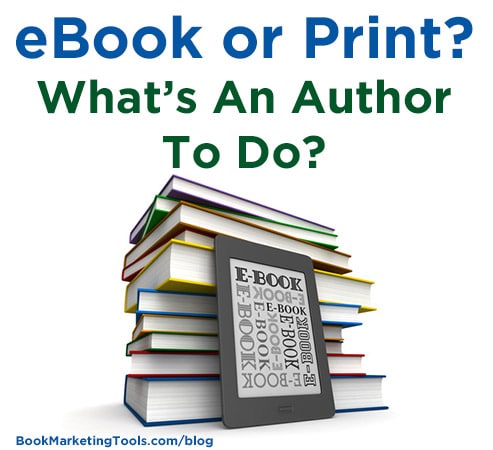I started early.
I was one of the first to own the clumsy, heavy Rocket E-Book released in 1998 and capable of storing ten books. I felt like a tech whiz kid.
As an author, it seemed natural to read on a screen; use a “portable” computer that weighed 29 pounds; and wander the internet long before social media became a marketing goldmine.
Kindle hit the stores in 2007 and ebooks flourished, claiming they would revolutionize how people read. Today, Amazon controls about 65% of the ebook market. Many people were suddenly convinced that the “old” technology of print was doomed.
Until print went on the rebound.
Armed with research and habits, the “old” technology of print has rallied. Actually, it never really left. “Once a tremendous engine of growth,” writes Robert Springer in EContent, “ebook sales have leveled off in recent years as the market matured.”
What happened? The numbers speak for themselves. Pew Research Center reports that 72% of American adults have read a book in the past year. Roughly 30-35% of book sales are ebooks – a number that has remained stable for several years. At the same time, print books are cheaper and faster to produce with POD services like CreateSpace, Smashwords, and IngramSpark.
“Some ebook adopters are returning to print or becoming hybrid readers,” writes Alexandra Alter in The New York Times
Multiple studies have found significant psychological and physiological differences between reading on a screen and in print. Most promise a healthy continuation of print. As authors, this information can guide us to writing books that suit the device . . . rather than print squeezed into a format that doesn’t quite work.
Science can tell us why.
Let me give you an example. I’m a hybrid – with 28 published books both traditional and indie, fiction and nonfiction, print and ebook. I’m constantly reading – fiction on screens and nonfiction in print. Many studies have found that ideas, recall, and information are better absorbed in print rather than on a screen. As an author, I best integrate research read in print and characters and plots on a free flowing screen.
What does this have to do with writers? Everything. Are you publishing only ebooks? Have you considered print? Do you know what happens when the physical feel of print is replaced with text that flows on a screen? Reading is easy, fast, and convenient on screen while print increases immersion and concentration. Ebooks are more susceptible to distractions – like flipping to FaceBook between chapters. Print books slow down reading and ease navigation.
How can an author take advantage of the many differences between screen and print? The science of reading can actually help you write a better book.
You have three choices: ebook, print book, or both. There are dozens of different devices from smart phones and tablets to dedicated Ereaders. Style, content, plot, and structure can maximize your words to fit the technology.
Dr. Fink was online years ago, long before social media and You Tube. As a mental health professional, she merged psychology and technology to create the concept of psychotechnology. Her 28 books (both traditional and indie published), hundreds of blogs and articles, and photo insights utilize the science of today’s readers. Dr. Fink’s most recent series, Broken, merges fiction and photography in seven psychological thrillers that span the 15th century to present day. Click here to visit Dr. Fink’s website, Haunted Family Trees. Click here for her bestselling thrillers that merge photography and fiction.

